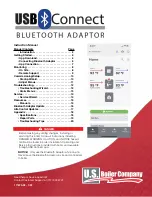
Fabric OS 6.2 administrator guide 361
Disabling ingress rate limiting
1.
Connect to the switch and log in as admin.
2.
Enter the
portCfgQos
--
resetratelimit
command.
portcfgqos --resetratelimit
slot
/
port
where:
For example, to disable ingress rate limiting on slot 3, port 9, enter the following command:
portcfgqos --resetratelimit 3/9
QoS: SID/DID traffic prioritization
SID/DID traffic prioritization is a licensed feature that allows you to categorize the traffic flow between a
given host and target as having a high or low priority. For example, you could assign online transaction
processing (OLTP) to high priority and backup traffic to low priority.
All flows without QoS prioritization are considered medium priority.
High, medium, and low priority flows are allocated to different virtual channels (VCs). High priority flows
receive more VCs than medium priority flows, which receive more VCs than low priority flows. The virtual
channels are allocated as shown in
Table 76
.
NOTE:
If there is a single low priority flow to a destination ID (DID) and several medium priority flows to
that same DID, it is possible that the medium priority flows would have less bandwidth because they have
to share the medium priority VCs, whereas the low priority flow would have a separate VC.
IMPORTANT:
SID/DID traffic prioritization is a licensed feature. An Adaptive Networking license must be
installed on every switch that is in the path between a given configured device pair.
QoS zones
You assign high or low priority (QoS level) using a QoS zone, a special zone that indicates the priority of
the traffic flow between a given host/target pair. The members of a QoS zone are WWNs of the
host/target pairs. QoS zones can contain only WWN members (WWNN or WWPN). Domain,Index
zoning is not supported.
A QoS zone has a special naming convertion, to differentiate it from a regular zone. The format of the
QoS zone name is as follows:
QOS
p
_
xxxxxx
where
p
is the priority level (
H
igh or
L
ow) and
xxxxxx
is the user-defined portion of the name. For
example, the following are valid QoS zone names:
QOSH_HighPriorityTraffic
QOSL_LowPriorityZone
slot/port
The slot and port number of the F_Port or FL_Port for which you want to disable
ingress rate limiting.
Table 76
Virtual channels assigned to QoS priority
Priority
Number of
VCs
VCs
assigned
High priority
5
10–14
Medium priority
4
2–5
Low priority
2
8, 9
Summary of Contents for A7533A - Brocade 4Gb SAN Switch Base
Page 1: ...HP StorageWorks Fabric OS 6 2 administrator guide Part number 5697 0016 Edition May 2009 ...
Page 24: ...24 ...
Page 99: ...Fabric OS 6 2 administrator guide 99 ...
Page 100: ...100 Managing user accounts ...
Page 118: ...116 Configuring standard security features ...
Page 164: ...162 Configuring advanced security features ...
Page 234: ...232 Installing and maintaining firmware ...
Page 268: ...266 Administering advanced zoning ...
Page 284: ...282 Configuring Enterprise class platforms ...
Page 292: ...290 Routing traffic ...
Page 294: ...292 Interoperability for merged SANs ...
Page 302: ...300 Configuring the Distributed Management Server ...
Page 334: ...332 iSCSI gateway service ...
Page 340: ...338 Administering NPIV ...
Page 407: ...Fabric OS 6 2 administrator guide 405 ...
Page 408: ...406 Using the FC FC routing service ...
Page 438: ...434 Administering extended fabrics ...
Page 460: ...456 Administering ISL trunking ...
Page 516: ...512 FICON fabrics ...
Page 526: ...522 Configuring and monitoring FICON Extension Services ...
Page 540: ...536 Configuring the PID format ...
Page 544: ...540 Understanding legacy password behavior ...
Page 546: ...542 Mixed fabric configurations for non merge SANs ...
Page 550: ...546 Migrating from an MP Router to a 400 MP Router ...
Page 558: ...554 Inband Management ...
Page 572: ...568 ...
















































